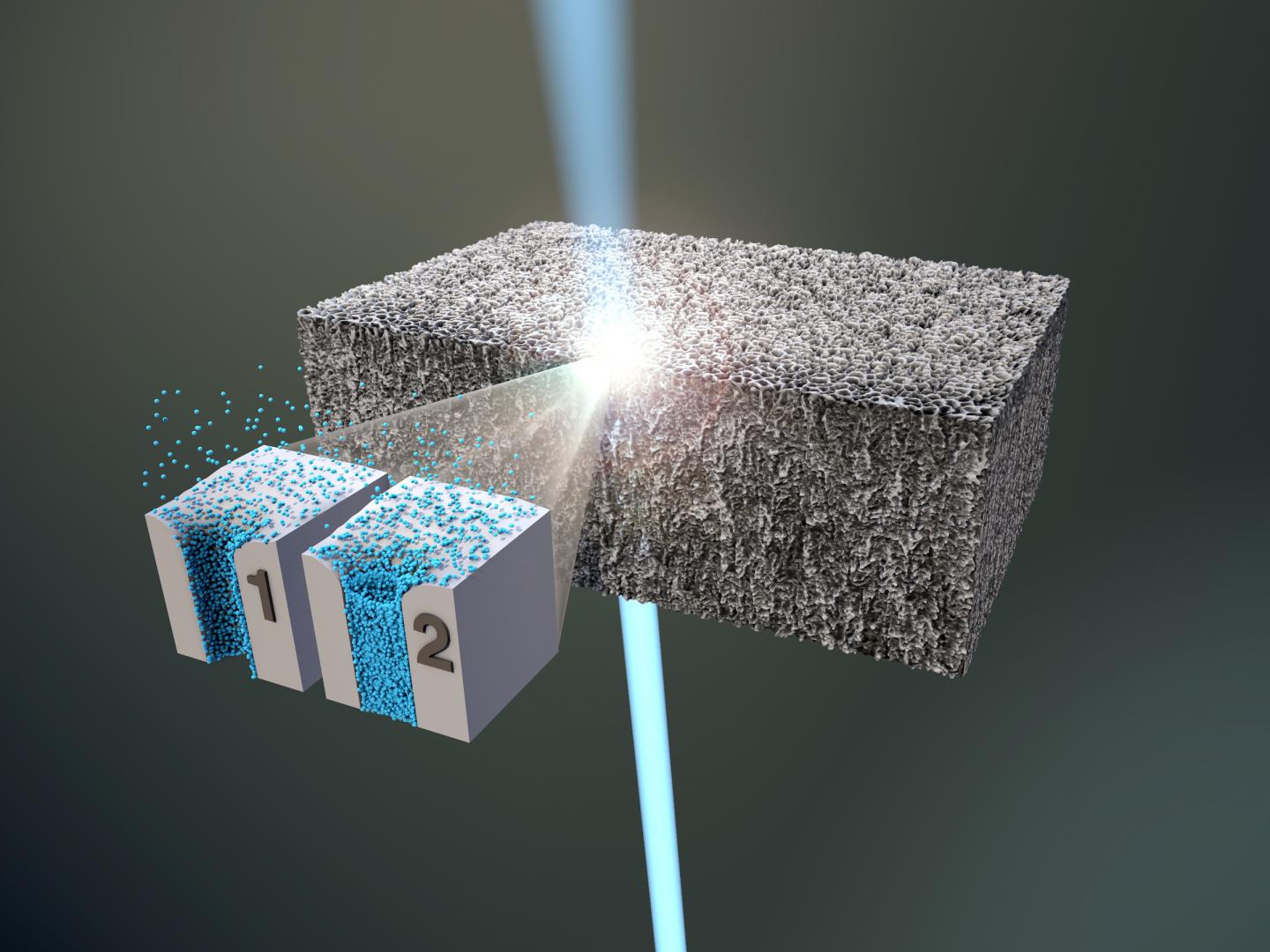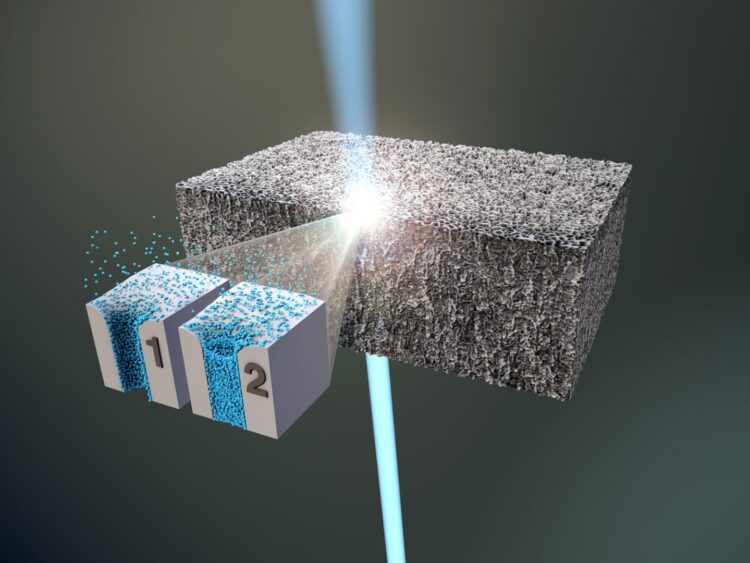Battery electrodes, storage devices for gases, and some catalyst materials have tiny functional pores that can accommodate atoms, ions, and molecules.

Credit: M. Künsting/HZB
Most battery materials, novel catalysts, and storage materials for hydrogen have one thing in common: they have a structure comprised of tiny pores in the nanometer range. These pores provide space which can be occupied by guest atoms, ions, and molecules. As a consequence, the properties of the guest and the host can change dramatically. Understanding the processes inside the pores is crucial to develop innovative energy technologies.
Observing the filling process
So far, it has only been possible to characterise the pore structure of the substrate materials precisely. The exact structure of the adsorbate inside the pores has remained hidden. To probe this, a team from the HZB together with colleagues from the University of Hamburg, from Germany’s national metrology institute PTB, and Humboldt-Universität zu Berlin combined for the first time two different X-ray methods applied in-situ during filling and emptying of the porous host. Doing so, they made the structure of the guest atoms alone visible.
Model system: Mesoporous Silicon with Xenon
The team examined the process on a model system made of mesoporous silicon. The noble gas xenon was brought into contact with the silicon sample in a custom-made physisorption cell under temperature and pressure control. They examined the sample using anomalous small-angle X-ray scattering (ASAXS) and X-ray absorption near-edge structure (XANES) spectroscopy simultaneously, near the X-ray absorption edge of the guest xenon. In this way, they were able to sequentially record how xenon migrates into the pores. They could observe that the atoms first form a monoatomic layer on the pores’ inner surfaces. Further layers are added and undergo rearrangements until the pores are filled. It gets clear that the filling and emptying of the pores proceed through different mechanisms with distinct structures.
Signal of the Xenon guests extracted
“Using conventional X-ray scattering (SAXS), you mainly see the porous material, the contributions of the guests are hardly visible”, says Eike Gericke, first author of the study, who is doing his PhD on X-ray techniques. “We changed that by using ASAXS and measured at the X-ray absorption edge of xenon. The interactions between xenon and the X-ray beam change at this edge, so we can mathematically extract the signal of the xenon guests.”
Empirical insight into confined matter
“This gives us for the first time direct access to an area that previously could only be speculated about”, explains Dr. Armin Hoell, a corresponding author of the paper. “Applying the combination of these two X-ray methods to the process now makes it possible to observe the behaviour of matter confined in nanostructures empirically. This is a powerful new tool to gain deeper insights into battery electrodes, catalysts, and hydrogen storage materials.”
###
Media Contact
Antonia Roetger
[email protected]
Original Source
https:/
Related Journal Article
http://dx.





